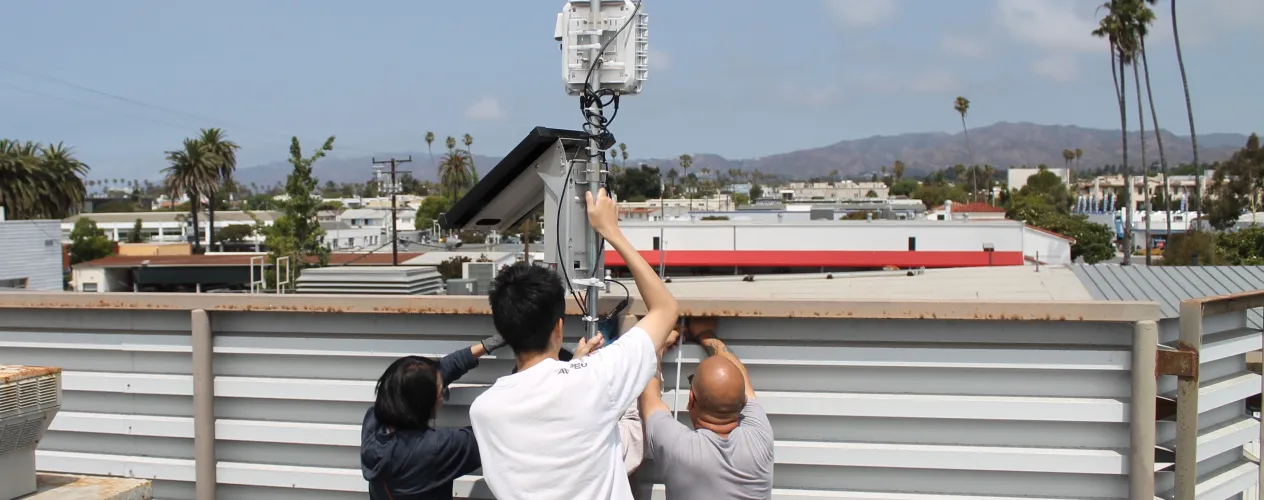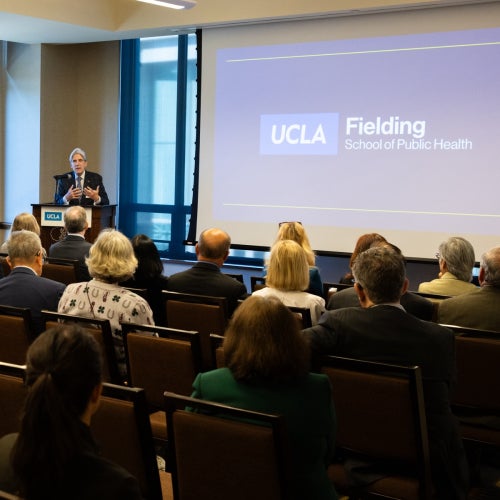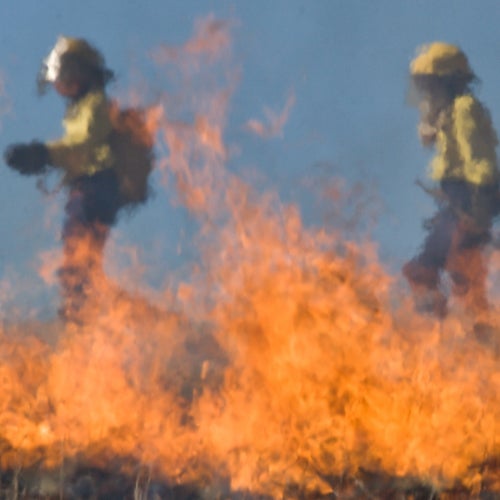UCLA Fielding-led team completes installation of air quality monitoring network in western Los Angeles County as part of fire recovery efforts
The project provides real-time information to residents about air quality and safety as reconstruction work progresses in Los Angeles

A team led by UCLA Fielding School of Public Health researchers completed the installation of 20 air quality monitoring stations in West Los Angeles this month, allowing residents across the region to get up to date information on air quality as reconstruction work moves forward after the devastating Palisades fire.
“The fires released a complex mix of particulate matter and volatile organic compounds from burned structures, vehicles, and household products, and these emissions can persist for weeks to months, as damaged materials gradually release pollutants back into the air,” said Dr. Yifang Zhu, a UCLA Fielding School of Public Health air quality expert who leads the effort. “Additionally, cleanup activities - debris removal and demolition – and construction may further stir up dust and other contaminants, prolonging exposure risks for returning residents and construction workers, so our goal here is to give residents access to real-time, local air quality data, help identify pollution hotspots, and inform public health responses.”
The effort, known as the Community Action Project (CAP) Los Angeles Air, or CAP AIR, consists of 20 sensor stations installed in secure locations from Topanga State Park east through Pacific Palisades toward Brentwood and south towards Santa Monica.
The January blazes in Los Angeles County, in both the Pacific Palisades-Malibu area in western Los Angeles, adjacent to the Santa Monica Mountains, and the Altadena-Pasadena communities in the foothills of the San Gabriel Mountains, claimed at least 31 lives and damaged or destroyed more than 18,000 structures, County officials said; the UCLA-led team is currently handling the western Los Angeles monitoring project, and a similar effort is underway in the Altadena-Pasadena area.
This effort in western Los Angeles has been jointly funded by the non-profit R&S Kayne Foundation, with offices in California and New Zealand, and the Danhakl Family Foundation, based in Los Angeles.
“As both a mother and a physician living in the Palisades, I believe Dr. Zhu’s air quality research is essential for all residents. Air sensors are tools that give us real-time data to protect our kids, our patients, and our community,” said Dr. Victoria Danhakl, trustee of the Danhakl Family Foundation. “We are honored to support research that helps ensure that everyone can breathe clean, healthy air.”
The air quality network provides easily understood updates from each station, superimposed over a public, on-line dashboard that maps the region every 5-10 minutes. The data includes color-coded icons for air quality ranging from good (green) through hazardous (dark red) for a variety of potentially dangerous airborne particles, ranging from 10 micrometers, PM10 (about the width of a cotton fiber) to 2.5 micrometers, PM2.5, or 30 times smaller than a human hair.
“While there are existing sensor networks that track PM2.5, there’s a real gap when it comes to monitoring PM10,” Zhu said. “Those coarse particles can contribute to a range of health problems, particularly affecting the respiratory and cardiovascular systems - especially after wildfires, when debris removal and reconstruction stir up dust. That’s why it’s important to measure both fine and coarse particles to gain a complete picture of air quality and community exposure.”

